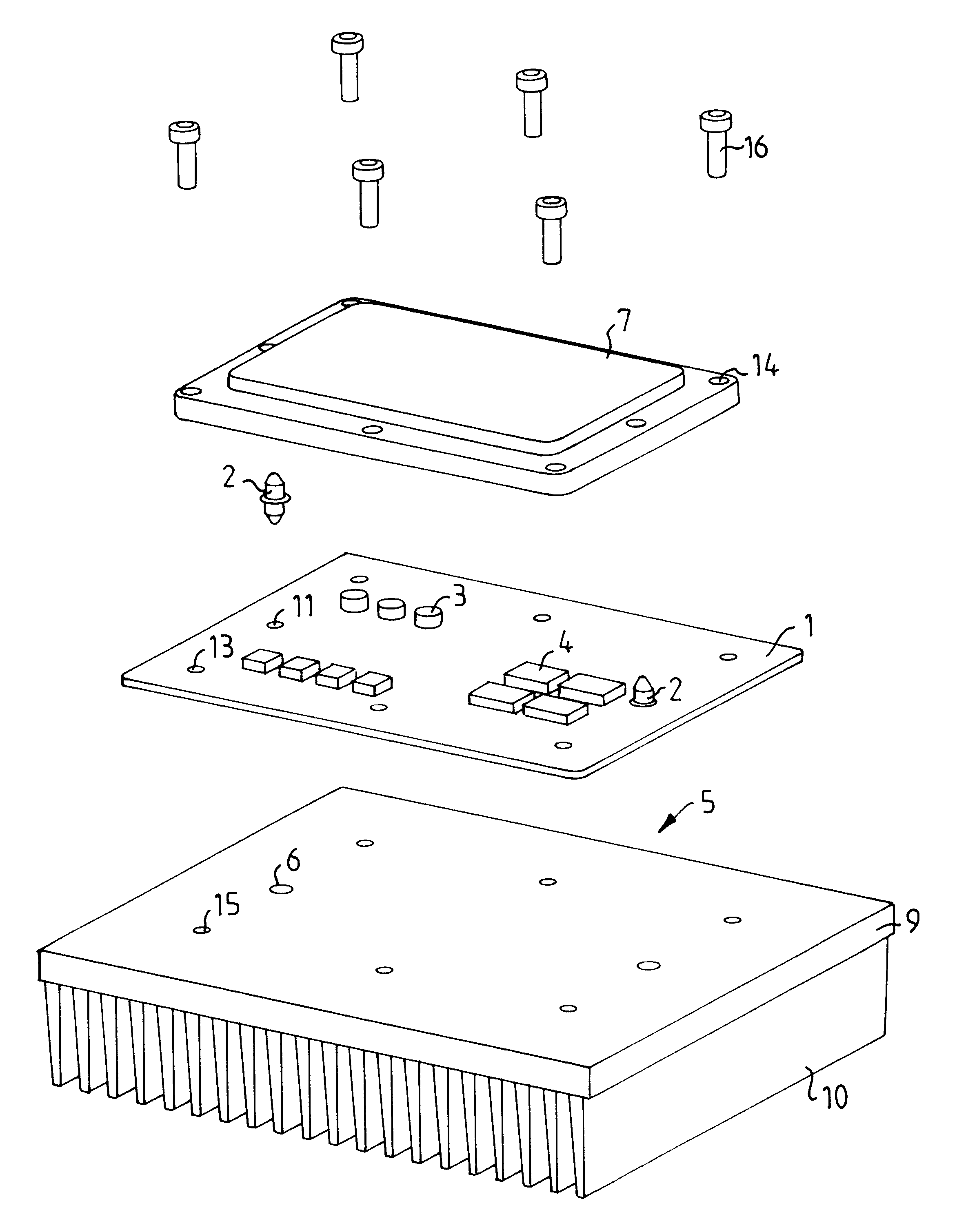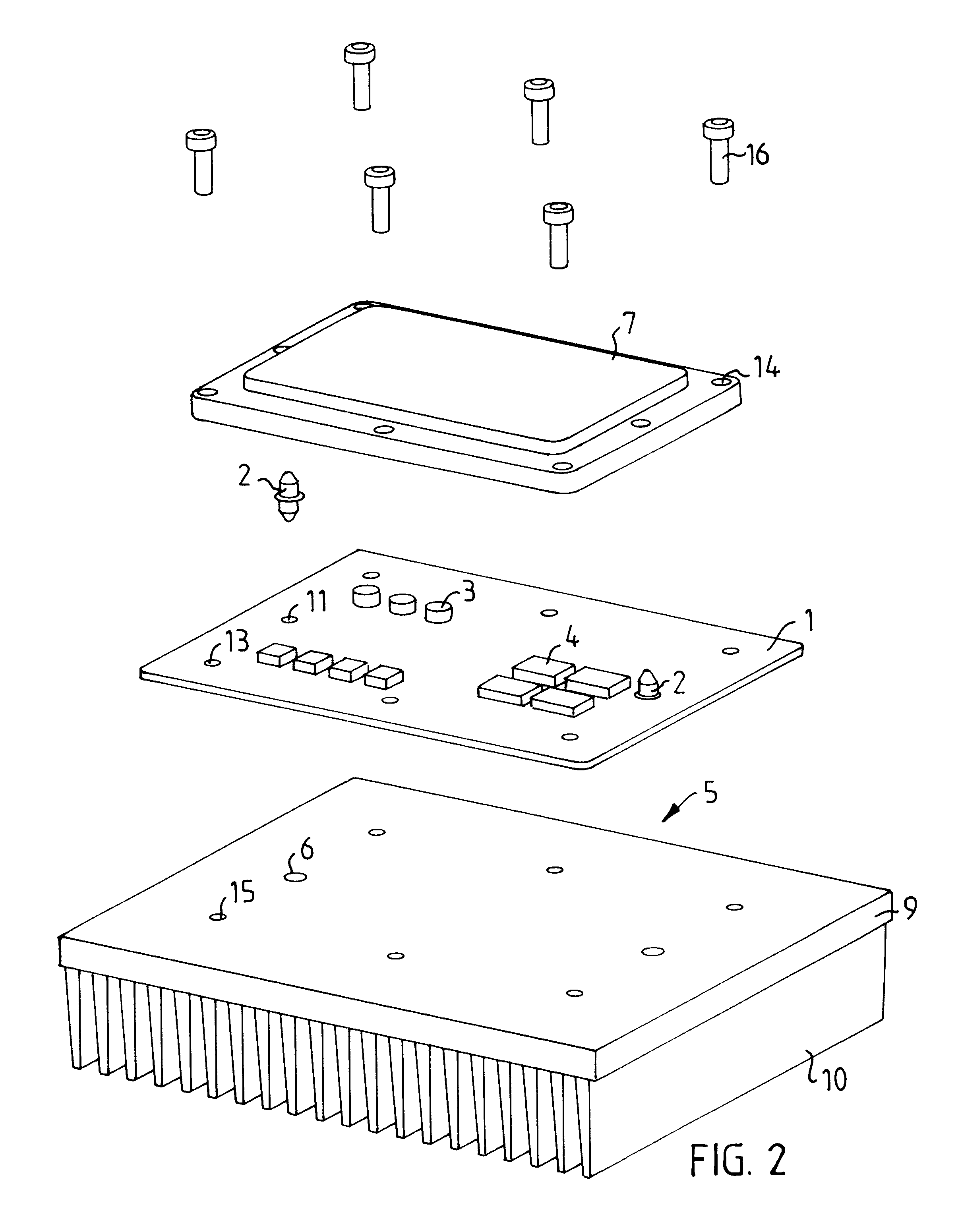Method and apparatus for improving mounting
a technology of mounting and mounting plate, applied in the direction of mounting of support structure, modification by conduction heat transfer, instruments, etc., can solve the problems of affecting the mounting of printed board assembly and/or element, requiring very small tolerance limits, and material often creating bulges around the edges between the holes
- Summary
- Abstract
- Description
- Claims
- Application Information
AI Technical Summary
Benefits of technology
Problems solved by technology
Method used
Image
Examples
Embodiment Construction
While the invention covers various modifications and alternative constructions, preferred embodiments of the invention are shown in the drawings and will hereinafter be described in detail. It is to be understood, however, that the specific description and drawings are not intended to limit the invention to the specific forms disclosed. On the contrary, it is intended that the scope of the claimed invention include all modifications and alternative constructions thereof falling within the spirit and scope of the invention as expressed in the appended claims to the full range of their equivalents.
FIG. 1 shows a schematic block diagram of a preferred method for fastening a printed board to an element, where the method is divided into five principal steps S1-S5. Before the first step, a printed board 1 has been fabricated and a solder paste has been applied to at least one side of the printed board 1. Such a method is known in the prior art and is not described further.
Step S1 comprise...
PUM
| Property | Measurement | Unit |
|---|---|---|
| mechanical | aaaaa | aaaaa |
| electric conductibility | aaaaa | aaaaa |
| assembly time | aaaaa | aaaaa |
Abstract
Description
Claims
Application Information
 Login to View More
Login to View More - R&D
- Intellectual Property
- Life Sciences
- Materials
- Tech Scout
- Unparalleled Data Quality
- Higher Quality Content
- 60% Fewer Hallucinations
Browse by: Latest US Patents, China's latest patents, Technical Efficacy Thesaurus, Application Domain, Technology Topic, Popular Technical Reports.
© 2025 PatSnap. All rights reserved.Legal|Privacy policy|Modern Slavery Act Transparency Statement|Sitemap|About US| Contact US: help@patsnap.com



